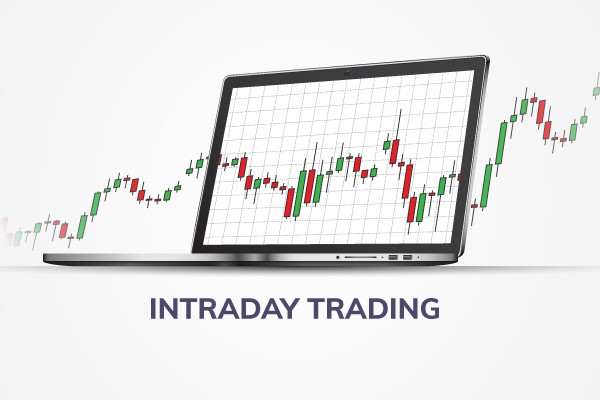More About Intraday
Intraday trading refers to buying and selling financial instruments within the same trading day. It involves taking advantage of short-term price movements to make profits. Traders aim to capitalize on small price fluctuations by making multiple trades throughout the day. It’s important to note that intraday trading can be risky due to the volatile nature of the markets.

Benefits of Intraday Trading
Potential for Quick profits
Intraday trading allows traders to profit from short-term price movements, enabling potential returns within the same trading day.
Reduced Overnight Risk
Since intraday traders do not hold positions overnight, they are not exposed to the risks associated with overnight market movements or news events.
Increased liquidity
Intraday traders often have access to higher leverage, allowing for larger position sizes with less capital.
Lower capital requirements
Intraday trading often requires lower capital compared to long-term investing, as traders can leverage their positions to amplify potential returns.
Flexibility and Control
Intraday traders have the flexibility to adapt to changing market conditions and can actively manage their positions throughout the trading day.
Opportunity to learn and improve
Intraday trading provides traders with the opportunity to gain experience, learn new strategies, and improve their trading skills through hands-on practice.
More About Holding
Holding in the stock market refers to the act of owning shares of a company for an extended period of time, typically with the expectation of long-term growth and potential dividends. Investors who hold stocks are often referred to as “long-term investors” or “buy-and-hold investors.” Holding stocks for the long term allows investors to benefit from the company’s growth over time and potentially earn returns through capital appreciation and dividends. It is important for investors to conduct thorough research and analysis before deciding to hold stocks in order to make informed investment decisions.

Holding stocks in the stock market can offer several benefits
Potential for long-term growth
Stocks have historically provided higher returns compared to other investment options over the long term.
Diversification
Investing in a variety of stocks can help spread risk and reduce the impact of market fluctuations on your overall portfolio.
Hedge against inflation
Stocks have the potential to outpace inflation, helping to preserve the purchasing power of your investments over time.
Ownership in companies
Holding stocks means you have ownership in the companies you invest in, allowing you to participate in their success.
Dividend income
Some stocks pay dividends, providing a source of passive income for investors.
More About Capital Gain
Capital Gain refers to the profit made from selling a stock or other investment at a higher price than what was originally paid for it. It is calculated by subtracting the purchase price (also known as the cost basis) from the selling price. Capital gains can be realized when an investor sells a stock for a higher price than they bought it for, resulting in a positive return on their investment. It’s important to note that capital gains are typically subject to taxes, with the rate depending on how long the investment was held before being sold.

More About Future Gain
Future growth potential in the stock market refers to the anticipated increase in value of a particular stock or investment over time. This potential is often based on factors such as company performance, industry trends, economic conditions, and market sentiment. Investors analyze these factors to make informed decisions about which stocks have the potential for growth in the future. It’s important to note that investing in the stock market carries risks, and it’s advisable to do thorough research and consider diversification to manage these risks effectively.
